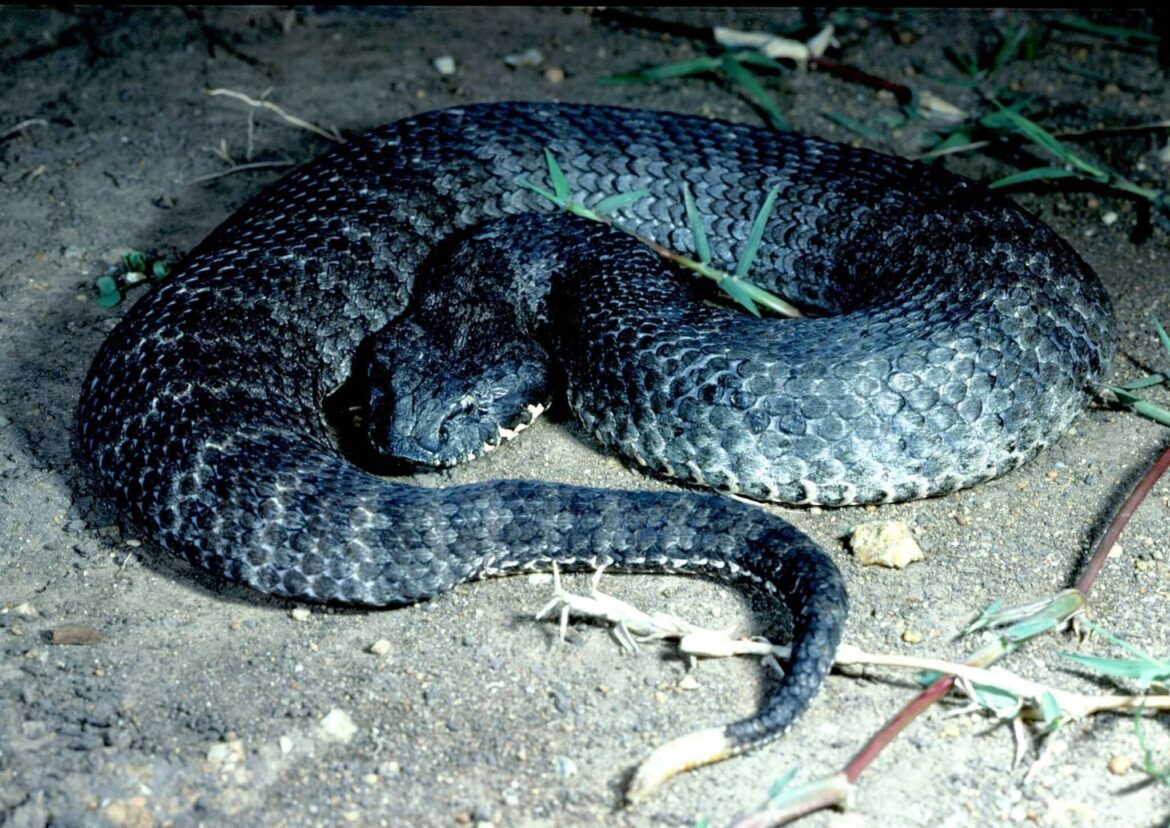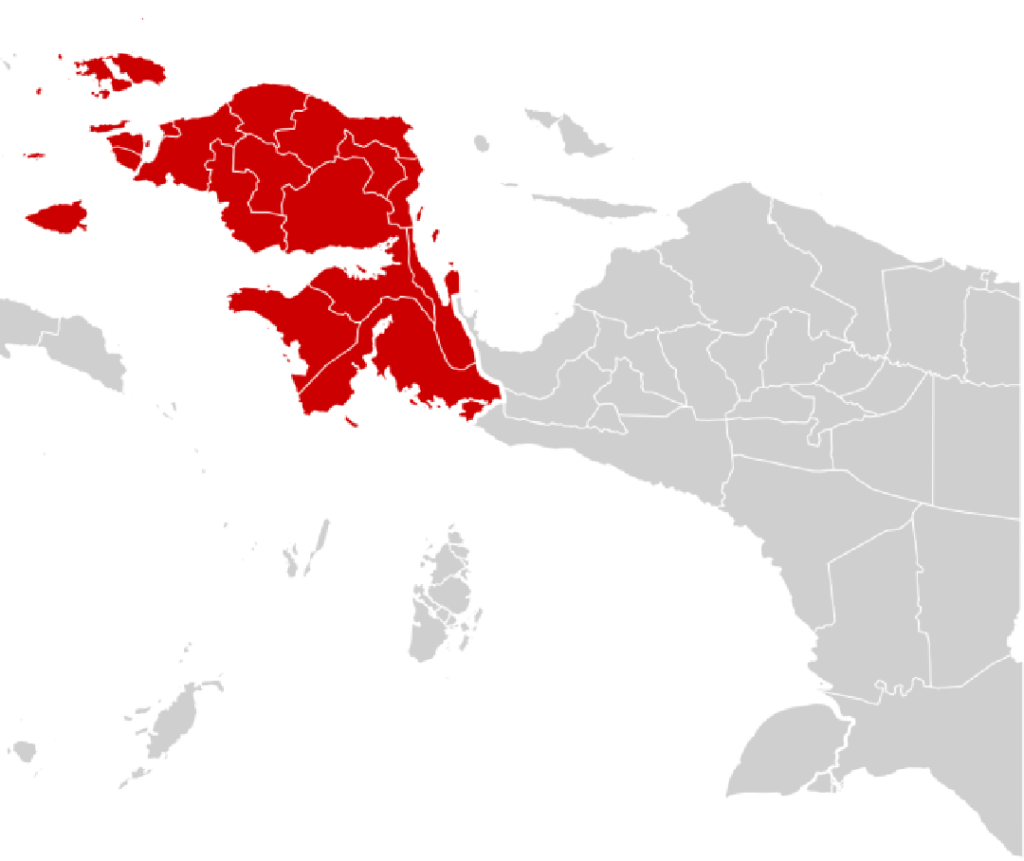Deep in the lush, mist-shrouded rainforests of Papua, Indonesia, lives a creature both feared and revered, a living testament to the region’s extraordinary biodiversity. Known locally as the “ular bodoh,” or “stupid snake,” the Papuan Death Adder (Acanthophis laevis) is anything but foolish. Despite its misleading name, this venomous snake is one of the most lethal predators in Papua, a master of camouflage and ambush that embodies the delicate balance of life in one of the world’s last ecological frontiers.
Papua: A Biodiversity Hotspot
Papua is often called the “Green Paradise” of Indonesia, home to some of the most pristine forests, unique wildlife, and untouched highlands in the world. Its rainforests are filled with endemic species—birds-of-paradise, tree kangaroos, exotic insects, and rare reptiles—making the island a biological treasure trove. The Papuan Death Adder is one of these unique species, playing a vital ecological role that reflects the complexity of the island’s ecosystems. Its very existence is a symbol of the richness and fragility of Papua’s biodiversity, where each species, no matter how small or dangerous, contributes to the health of the forest.
The “Stupid Snake” Misnomer
The name “stupid snake” is a curious misnomer. Unlike aggressive snakes that chase prey, the Papuan Death Adder is primarily lethargic, often lying in wait for hours in leaf litter or among fallen branches. Its stillness, however, is deceptive. With remarkable patience, it watches, waits, and strikes with deadly precision. Scientists describe it as an ambush predator, relying on stealth and cunning rather than brute force. Its behavior may appear slow or careless, hence the local nickname, but those who underestimate it often regret it.
Anatomy and Hunting Strategy
The Papuan Death Adder is a short-bodied, heavy-set snake with a flattened triangular head and cryptic coloration, often matching the browns and greens of the forest floor. One of its most intriguing features is its tail, which it uses as a lure. The tip twitches like a worm or insect, drawing in unsuspecting prey such as small mammals, birds, or frogs. Once the target is within striking range, the snake delivers a lightning-fast bite, injecting potent neurotoxic venom that paralyzes instantly. This strategy allows the death adder to conserve energy while remaining one of the forest’s most efficient predators.
Despite its lethality, the Papuan Death Adder is not aggressive toward humans. Most bites occur when people accidentally step on or provoke the snake. Nevertheless, its venom is highly dangerous, capable of causing respiratory failure and death if untreated, making it a species both respected and feared by local communities.
Cultural Significance and Local Knowledge
Papuan indigenous communities have coexisted with the death adder for centuries. Stories of the “ular bodoh” are part of local folklore, often serving as cautionary tales to teach respect for the forest and its inhabitants. Hunters and villagers understand its behavior intimately—they know the places where death adders are likely to hide, the times of day they are most active, and the subtle signs of their presence. This traditional ecological knowledge is invaluable, not only for avoiding dangerous encounters but also for appreciating the role of the snake within the forest ecosystem.
Ecological Role in Papua’s Forests
As a top predator, the Papuan Death Adder is crucial to maintaining ecological balance. By regulating populations of small mammals and reptiles, it indirectly supports forest regeneration and plant diversity. Without predators like the death adder, rodent populations could explode, affecting crops, seeds, and native vegetation. Its presence is an indicator of a healthy ecosystem, demonstrating that even deadly species have a functional role in sustaining biodiversity.
Conservation Concerns
Despite its resilience, the Papuan Death Adder faces threats from human activity. Deforestation, logging, land conversion, and mining are encroaching on its natural habitats. With forests fragmented and ecosystems disrupted, the snake’s hunting grounds shrink, increasing the likelihood of human-snake conflicts. Moreover, its venomous reputation sometimes leads to unnecessary killing by fear, further impacting local populations.
Conservationists emphasize the importance of protecting Papua’s forests, not only to safeguard charismatic species like birds-of-paradise but also to preserve less glamorous yet equally vital creatures like the death adder. Initiatives that promote habitat protection, community education, and sustainable land use are key to ensuring the survival of this enigmatic snake and the broader ecosystem it inhabits.
Scientific Significance
For herpetologists and toxinologists, the Papuan Death Adder is of high scientific interest. Its venom has unique neurotoxic properties, making it a subject for medical research, particularly in understanding neuromuscular transmission and developing antivenoms. Studying its hunting behavior, physiology, and habitat requirements also provides insights into the dynamics of Papua’s rainforests, where predator-prey interactions are finely tuned over millennia.
Tourism and Education Opportunities
Papua’s natural heritage, including species like the death adder, presents opportunities for eco-tourism and environmental education. Carefully managed guided tours can educate visitors about the ecological roles of venomous snakes, their adaptations, and the importance of forest conservation. This approach not only boosts local economies but also fosters respect for wildlife, encouraging coexistence rather than fear-driven eradication.
Destinations like Baliem Valley, Lake Sentani, and Raja Ampat are already drawing attention for eco-tourism, and incorporating wildlife education into these experiences can enhance the region’s appeal while promoting conservation awareness. Tourists can learn about the life of the death adder, its hunting strategy, and its ecosystem role, gaining a deeper appreciation for Papua’s unique biodiversity.
A Symbol of Balance and Resilience
The Papuan Death Adder embodies the balance and resilience of Papua’s forests. Silent, deadly, and patient, it reminds us that nature operates on intricate rules that humans are only beginning to understand. Its story is one of survival, adaptation, and ecological significance—a small yet powerful thread in the rich tapestry of life in Papua.
Conclusion
Papua’s “stupid snake” is anything but foolish. The Papuan Death Adder is a master of survival, a potent predator, and a vital component of one of the world’s most unique ecosystems. Its presence underscores the extraordinary biodiversity of Papua, highlighting the importance of conservation, education, and sustainable interaction with nature. Protecting this venomous yet vital creature ensures that Papua’s forests remain vibrant, resilient, and full of life for generations to come.
With ongoing threats from human encroachment and habitat loss, the Papuan Death Adder also serves as a sentinel species, alerting us to the health of Papua’s forests. By respecting and understanding such species, local communities, scientists, and tourists can contribute to preserving the ecological treasures of this extraordinary island. The death adder may be silent, but its story speaks volumes about the richness and fragility of life in Papua.


